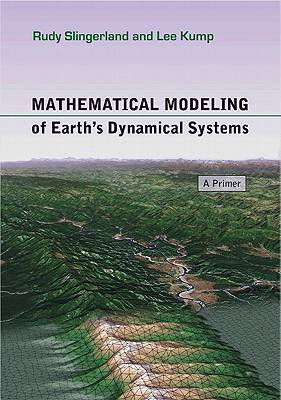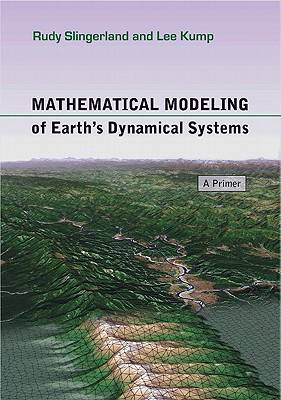
- Retrait gratuit dans votre magasin Club
- 7.000.000 titres dans notre catalogue
- Payer en toute sécurité
- Toujours un magasin près de chez vous
- Retrait gratuit dans votre magasin Club
- 7.000.000 titres dans notre catalogue
- Payer en toute sécurité
- Toujours un magasin près de chez vous
Mathematical Modeling of Earth's Dynamical Systems
A Primer
Rudy Slingerland, Lee Kump
Livre broché | Anglais
67,45 €
+ 134 points
Description
A concise guide to representing complex Earth systems using simple dynamic models
Mathematical Modeling of Earth's Dynamical Systems gives earth scientists the essential skills for translating chemical and physical systems into mathematical and computational models that provide enhanced insight into Earth's processes. Using a step-by-step method, the book identifies the important geological variables of physical-chemical geoscience problems and describes the mechanisms that control these variables. This book is directed toward upper-level undergraduate students, graduate students, researchers, and professionals who want to learn how to abstract complex systems into sets of dynamic equations. It shows students how to recognize domains of interest and key factors, and how to explain assumptions in formal terms. The book reveals what data best tests ideas of how nature works, and cautions against inadequate transport laws, unconstrained coefficients, and unfalsifiable models. Various examples of processes and systems, and ample illustrations, are provided. Students using this text should be familiar with the principles of physics, chemistry, and geology, and have taken a year of differential and integral calculus. Mathematical Modeling of Earth's Dynamical Systems helps earth scientists develop a philosophical framework and strong foundations for conceptualizing complex geologic systems.- Step-by-step lessons for representing complex Earth systems as dynamical models
- Explains geologic processes in terms of fundamental laws of physics and chemistry
- Numerical solutions to differential equations through the finite difference technique
- A philosophical approach to quantitative problem-solving
- Various examples of processes and systems, including the evolution of sandy coastlines, the global carbon cycle, and much more
- Professors: A supplementary Instructor's Manual is available for this book. It is restricted to teachers using the text in courses. For information on how to obtain a copy, refer to: http: //press.princeton.edu/class_use/solutions.html
Spécifications
Parties prenantes
- Auteur(s) :
- Editeur:
Contenu
- Nombre de pages :
- 248
- Langue:
- Anglais
Caractéristiques
- EAN:
- 9780691145143
- Date de parution :
- 17-04-11
- Format:
- Livre broché
- Format numérique:
- Trade paperback (VS)
- Dimensions :
- 130 mm x 203 mm
- Poids :
- 235 g







